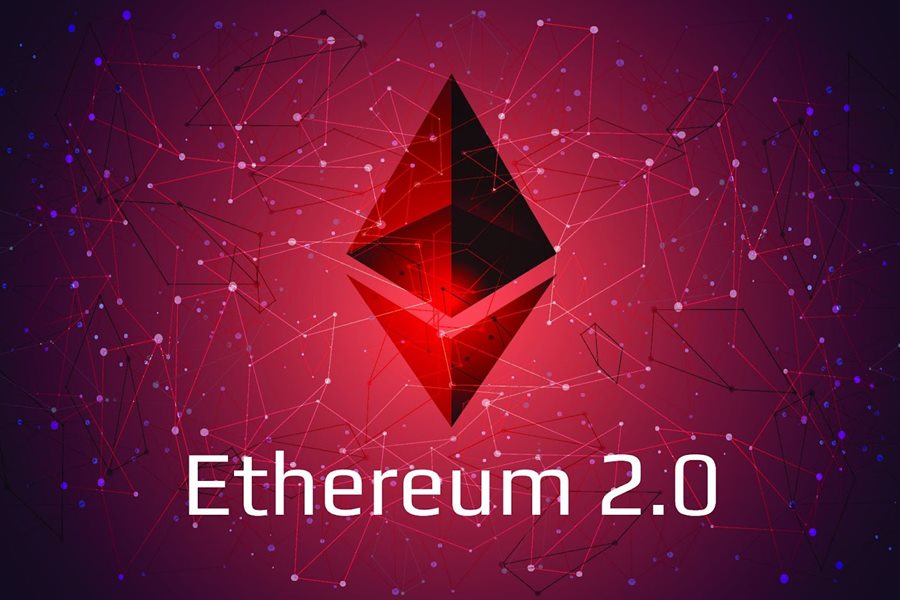The Ethereum co-founder presented a possible roadmap for the Ethereum 2.0 upgrade in an “endgame post” dated December 6, 2021 .
With the ETH 2.0 upgrade, Vitalik Buterin wants to solve the problems of the Ethereum blockchain , namely the insufficient scalability and the amount of transaction costs. The Ethereum founder assumes that at least part of the underlying infrastructure will be centralized and not decentralized. In addition, the introduction of the ETH 2.0 upgrade has been postponed - the implementation could be delayed even further.
Ethereum 2.0 Upgrade
The upgrade consists of three main elements, namely the launch of the “Beacon Chain” (which has already taken place and paved the way for the Layer 2 protocol from ETH), the “Merge” and the introduction of the “Shard Chains”. The last two upgrades should actually appear in the first half of 2022. However, the developers have already postponed the date for this to the end of 2022 . During the merge, the ETH 1.0 chain, which is based on the proof-of-work consensus mechanism, “merges” with the beacon chain, which is based on the proof-of-stake mechanism. With sharding , the computing processes are split up in order to improve scalability.
Vitalin Buterin: Block production will probably be centralized
At the beginning of the endgame post , Vitalik Buterin explains that he assumes that Ethereum will be at least partially centralized. He wrote, "Because the blocks are so large, only a few dozen or a few hundred nodes can afford to run a fully participating node that can create blocks or verify existing chains" . For block validation, the Ethereum co-founder would also like to introduce another staking mechanism to reward the validators.
“We're going to get a chain where block production is still centralized, but block validation is trustless and highly decentralized. Special anti-censorship magic prevents the block producers from doing censorship ”.
The Ethereum co-founder further stated that block production is expected to remain centralized even with the implementation of the so-called “rollups”. The rollups are nothing more than Layer 2 solutions that execute transactions outside of the Ethereum mainnet. “Not a single rollup manages to hold anywhere near the majority of Ethereum activity. Instead, they all only achieve a few hundred transactions per second, ” Buterin wrote in the article.
In the final part, Vitalik Buterin goes into the sharding technology, which is part of the ETH 2.0 upgrade. He explained that everything will likely take years because sharding and data sampling are complex technologies. So it could well be that the Ethereum 2.0 upgrade won't appear until 2023.
My Top PicksHoneygain - Passive earner that pays in BTC or PayPalMandalaExchange -The Best no KYC crypto Exchange!
BetFury - Play And Earn BFG for daily Bitcoin and ETH dividends!
Pipeflare - Faucet that pays in ZCash and Matic, Games pay in DAIWomplay - Mobile dApp gaming platform that rewards in EOS and BitcoinCointiply - The #1 Crypto Earning SiteLiteCoinPay -The #1 FaucetPay earner for LitecoinUpland - Collect Digital Properties & Test Your SkillsLBRY/Odysee - YouTube Alternative that lets you earn Money by viewing videos!FaucetPay - The #1 Microwallet PlatformFREEBTC - The #1 FaucetPay earner for Satoshi'sFaucetCrypto - An earning/faucet site that pays out instantlyFireFaucet - An earning site that pays better for some than Cointiply
DogeFaucet - Dogecoin Faucet
xFaucet - BTC, ETH, LTC, Doge, Dash, Tron, DGB, BCH, BNB, ZEC, FEY - Claim every 5 minutes
Konstantinova - BTC, ETH, LTC, Doge, Dash, Tron, DGB, BCH, BNB, ZEC, USDT, FEY, 25 Claims Daily
Disclaimer of liability
All information contained on our website has been researched to the best of our knowledge and belief. The journalistic contributions are for general informational purposes only. Any action that the reader takes based on the information found on our website is entirely at your own risk.


Comments
Post a Comment